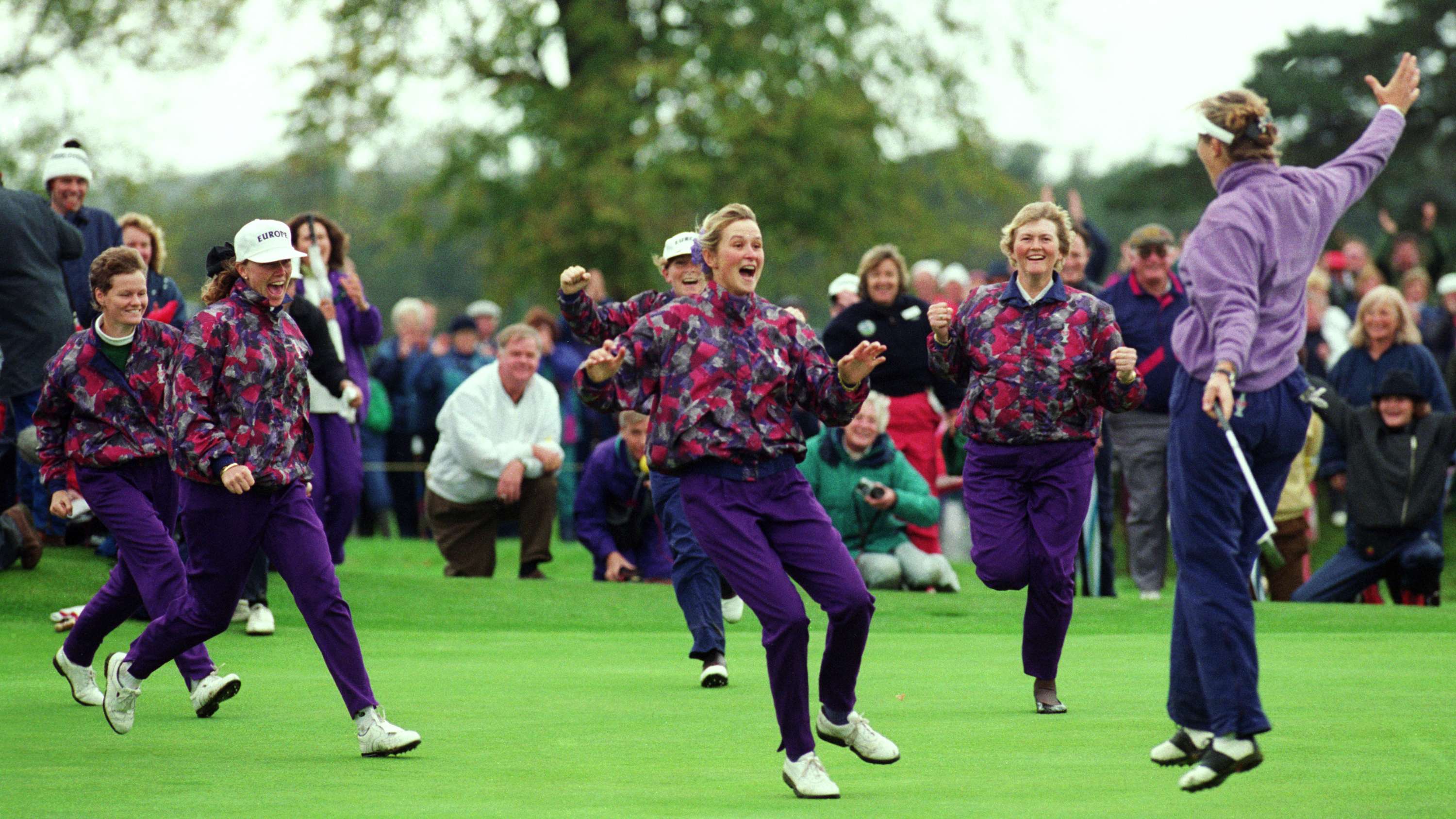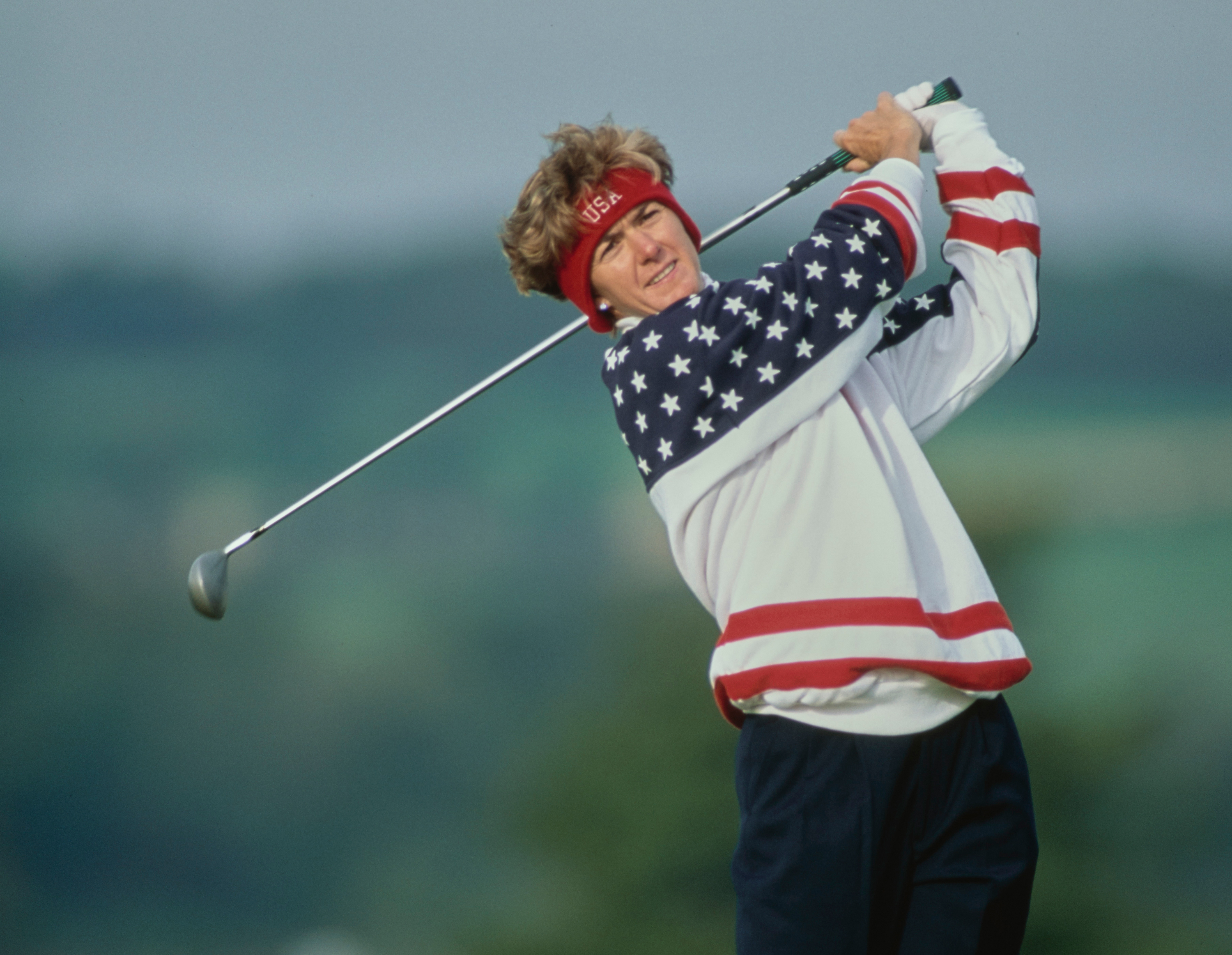'Our Players Are Hell-Bent On Seeing Her Eat Her Words' – What Inspired The Biggest Upset In Solheim Cup History?
Many feared US domination at a soggy Dalmahoy, but the contest turned out rather differently...


In the lead-up to the 1992 Solheim Cup at Dalmahoy Country Club near Edinburgh, Kathy Whitworth’s side of golfing superstars from the USA appeared to be even stronger than that which had thrashed the Europeans in the inaugural competition at Lake Nona in Florida in 1990.
TV pundits, the wider media and many of the players could only see it going one way. Some bookies were making the USA 1-6 favourites to complete another routine win.
With hindsight, it was definitely hard to make a case against that likely outcome in the run-up to the matches. Team USA was filled with Major Champions and up-and-coming stars. Six of the USA team members in 1992 are now in the World Golf Hall of Fame.
To give some more context, Team USA could boast a total of 21 Major titles between them while Team Europe had just two, one each for Liselotte Neumann and Laura Davies.
“They had all that era’s biggest names. Everybody,” Europe’s Helen Alfredsson would later remember.
But the golfing gods work in mysterious ways, and events transpired to create the perfect circumstances for what would become one of golf’s greatest upsets.
Europe Fired Up

Beth Daniel of Team USA
Firstly, the Europeans were riled and ready for a battle. A comment credited to Beth Daniel (although she has always denied saying it) in a Golf Digest piece ahead of the event had put Team Europe’s hackles up.
Subscribe to the Golf Monthly newsletter to stay up to date with all the latest tour news, equipment news, reviews, head-to-heads and buyer’s guides from our team of experienced experts.
“You could put any one of us on the European side and make it better,” Daniel was quoted as saying. “But the only Europeans who could help us are Laura Davies and Liselotte Neumann.”
Whether she said it or not, the effect was certainly inflammatory, and it made the European players sit up and take note.
“Our players are hell-bent on seeing Beth Daniel eat her words,” said European captain Mickey Walker in the build-up.
Then USA lost their captain Whitworth when, on the day the US side arrived at Dalmahoy, she received the sad news that her mother had died. Whitworth had to dash home, and without any vice-captains in those days, incoming LPGA president Alice Miller had to step in to lead the side. It was a blow for the visiting squad.
Whitworth had been an inspiring leader two years earlier and, with a record 88 LPGA victories to her name, she was an experienced and practised winner.
Miller was also a former Major Champion, but there’s no question that a last-minute change at the helm was unexpected for all and must have been a destabilising factor for the USA.
The 1992 US Women’s Open champion Patty Sheehan later remembered issues with the change in captaincy.
“Alice paired Juli Inkster and me together. I’d beaten Juli in a playoff at the US Open a few months earlier and it was kind of tough for both of us,” she said. “We tried to tell Alice, ‘Don’t put us together’, but she did it anyway. It didn’t work out.”
A foregone conclusion?

Laura Davies at Dalmahoy
There might also have been a degree of complacency among the visiting side. There was a sense from the US team that they were the big-name players and that the Europeans were no match.
There was even a report that one American player didn’t know the format coming into the week, and there’d been lobbying for a last-minute change so that all players would compete in the first two sessions. It didn’t go down well with the Europeans.
“I think a lot of them felt, maybe, they could just turn up and they were going to win,” said Mickey Walker.
Europe was out to do all they could to make sure that didn’t happen.
Finally, there was also the weather to contend with; something Europe’s captain would later cite as a contributory factor.
Team USA were not used to competing in wet and cool conditions, whereas the Europeans, many of whom plied their trade on the Ladies European Tour, were used to battling the elements.
The stars were aligned

Slight spoiler this picture... But, yes, Europe won!
The building blocks of the upset were fitting into place and as soon as play began on the Friday, it was clear the Europeans were going to put up a fight.
In the day one foursomes, both captains, Miller and Walker, stacked talent into the first two pairings, but it was Europe who profited most from the strategy.
Davies and Gibraltar-born Alison Nicholas, the 1987 Women’s British Open winner, took down the hugely experienced pair of Betsy King and Daniel, she of (possibly) the controversial statement in the run-up, by one hole, with Swedish duo Helen Alfredsson and Neumann seeing off six-time Major Champion Pat Bradley and Dottie Pepper (then called Dottie Mochrie) 2&1.
Europe were ahead by 2.5 to 1.5 at the end of the day.
Davies and Nicholas led from the front again on day two, this time beating Sheehan and Inkster by a hole in the fourballs.
Davies would go on to be the only player to win three points from three matches during the contest.
She played in the first 12 editions of the Solheim Cup and scored more points than any other player, 25.
In the balance

Solheim Cup - scenes of celebration
Back to 1992 and, by the end of day two, Europe held a slender one-point lead, 4.5 to 3.5. Crucial halves from Florence Descampe and Trish Johnson against 20-year-old Brandie Burton and Deb Richard, and from Swedes Alfredsson and Neumann against Bradley and Mochrie, meant the Saturday session was tied 2-2.
The match was in the balance, but as the wet conditions continued, it was Europe who would pull away as they found inspiration on the final day. Davies set the tone, beating Burton 4&2 in the first match. Wins came from Alfredsson, Johnson and Pam Wright and it fell to Catrin Nilsmark to secure the victory. She calmly stroked a short putt home to win the second Solheim Cup and send the home players and fans into raptures.
“We wanted to win it so much,” said Walker immediately afterwards. “We were inspired. They [USA] are probably in a state of shock at the moment.”
Europe’s win at Dalmahoy acted as a catalyst to ignite enthusiasm for the Solheim Cup, both among players and fans. It was an important moment for the women’s game.

Team Europe in 1992
There have been a number of great Solheim Cups with dominant displays and great comebacks, but 1992 will perhaps never be topped in terms of upsets, not just in this competition but in all top-level golfing team events. Team USA, as overwhelming favourites, were simply out-thought and outplayed by a group of incredibly determined and gritty European golfers who had been given no chance but proved the doubters wrong.
“It was an amazing upset,” Walker said later. “It was, obviously, the biggest upset in Solheim Cup history, but it was a big upset in sport generally.”
The USA now leads the overall Solheim Cup series by 10-7, but Europe are defending champions following their momentous wins at Gleneagles in 2019 and the Inverness Club in 2021.
This September at Finca Cortesin, Europe will look to make it three wins in a row. The USA will have other plans but currently the home side are narrow favourites. The USA will need to win away from home for the first time since 2015. It’ll be a tough task, but anything’s possible – just ask the underdogs of Dalmahoy!

Fergus is Golf Monthly's resident expert on the history of the game and has written extensively on that subject. He has also worked with Golf Monthly to produce a podcast series. Called 18 Majors: The Golf History Show it offers new and in-depth perspectives on some of the most important moments in golf's long history. You can find all the details about it here.
He is a golf obsessive and 1-handicapper. Growing up in the North East of Scotland, golf runs through his veins and his passion for the sport was bolstered during his time at St Andrews university studying history. He went on to earn a post graduate diploma from the London School of Journalism. Fergus has worked for Golf Monthly since 2004 and has written two books on the game; "Great Golf Debates" together with Jezz Ellwood of Golf Monthly and the history section of "The Ultimate Golf Book" together with Neil Tappin , also of Golf Monthly.
Fergus once shanked a ball from just over Granny Clark's Wynd on the 18th of the Old Course that struck the St Andrews Golf Club and rebounded into the Valley of Sin, from where he saved par. Who says there's no golfing god?